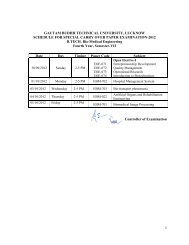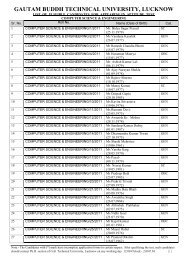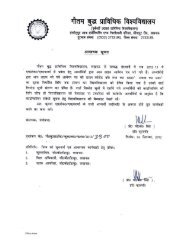NOTE MASTER OF BUSINESS ADMINISTRATION (MBA): The ...
NOTE MASTER OF BUSINESS ADMINISTRATION (MBA): The ...
NOTE MASTER OF BUSINESS ADMINISTRATION (MBA): The ...
Create successful ePaper yourself
Turn your PDF publications into a flip-book with our unique Google optimized e-Paper software.
Unit V (8 Sessions)<br />
Object Oriented Data Models; Network And Hierarchy Models; Security; Data Warehousing; Data And Database<br />
Administration; Distributed Databases<br />
SUGGESTED READINGS:<br />
1) Beynon-Davies P- Database Systems (Palgrave, 2003)<br />
2) Hoffer- Modern Database Management (Pearson Education, 6 th edition)<br />
3) Alexis and Leon- Database Management System (Vikas, 2003.)<br />
4) Majumdar and Bhattacharya- Database Management System (Tata McGraw-Hill) 1996.<br />
5) Navathe E- Fundamentals of Database Systems (Pearson Education, 3 rd edition)<br />
<strong>MBA</strong>-IT 2: SYSTEM ANALYSIS AND DESIGN & S<strong>OF</strong>TWARE ENGINEERING Max. Hours: 40<br />
Unit I (10 Sessions)<br />
Concepts of systems analysis: <strong>The</strong> system concept; Characteristics of system; Elements of system; Physical and abstract system;<br />
Open and closed system; Formal system, informal information system; Computer based information system and management<br />
information system, Decision support system; Problem solving skills; Interpersonal skills; Role of the Analyst; Mediation<br />
between conflicts<br />
Unit II (8 Sessions)<br />
Systems development life cycle; Stages of Systems development life cycle, Sampling; Interviewing and Questionnaires;<br />
Investigation; Interviewing; Observation<br />
Modelling: Logical and physical data flow diagrams; Logical data models [Entities; Attributes; and Relationships]. Three views<br />
of a system;<br />
Unit III (6 Sessions)<br />
Introduction to systems design (logical versus physical design) :Objectives of design; Constraints on design; Concepts of<br />
Modelling.<br />
Unit IV (8 Sessions)<br />
Process models and their importance: Waterfall Model; Evolutionary Development; Rapid Application Development (RAD)<br />
Model; Prototyping Model; Incremental Development; Spiral Model; Comparison of models and approaches<br />
Development methods and techniques: Structures Methods and Techniques (SA/SD), Object Oriented Analysis And Object<br />
Oriented Design (OOA/OOD)<br />
Unit V (8 Sessions)<br />
Software development life cycle: A comprehensive review of each life cycle phase including Requirements Analysis and<br />
Specification, Design, Implementation, Validation And Verification; Installation and maintenance and each Object Oriented<br />
Life Cycle phase including Inception, Elaboration, Construction and Transition; Covering concepts, different techniques used<br />
and Issues involved in each phase; Introduction of SDLC with SA/SD approach<br />
SUGGESTED READINGS:<br />
1) Hoffer- Modern Systems Analysis and Design (Pearson Education, 3 rd edition) 2002.<br />
2) Kendall and Kendall- Systems Analysis and Design (Prentice-Hall, 5 th edition) 1995 3 rd ed.<br />
3) Whitten, J L. - System Analysis & Design Method (Tata McGraw-Hill) 2002, Galgotia<br />
4) Awad E M- System Analysis & Design (Galgotia books) 2004.<br />
5) Jalota, Pankaj- An Integrated Approach to Software Engineering (Narosa Publishing House) 2001 2 nd ed.<br />
6) Sommerville I- Software Engineering (Pearson Education, 2004, 6 th edition)<br />
7) Pfleeger Software Engineering: <strong>The</strong>ory & Practice (Pearson Education, 2 nd edition) 2002.<br />
8) Pressman R S- Software Engineering: A Practitioner's Approach (McGraw-Hill) 2001 New York.<br />
<strong>MBA</strong>-IT 3: DATA COMMUNICATION AND NETWORK Max. Hours: 40<br />
Unit I (8 Sessions)<br />
Types of signals: AM; FM; PM; PCM; PDM; TDMA; FDMA; SDMA; CDMA; ASK; FSK; PSK<br />
Features: Error detection and correction codes; Hamming codes; cyclic codes; Data compression<br />
Unit II (8 Sessions)<br />
LAN topologies: Workstation; Server; Cables; Types of Ethernet; Broadband and base-band; Optical Fibers; Network Interface<br />
Card<br />
Networks and accessories: LAN, MAN, WAN; Hub; Bridges; Switches; Routers; Gateways<br />
Cell Relay; Frame Relay; FDDI; ISDN; B-ISDN<br />
Unit III (8 Sessions)<br />
Services provided: Services; Protocols; Service Access Points; OSI Model; Broadcasting; Multicasting; Point-to-point<br />
communication; IP Addressing<br />
Concepts: Concepts of Port; Socket; ATM; Tunneling; Network Address Translation; Virtual Private Network<br />
Unit IV (8 Sessions)<br />
Network Operating systems: Unix; Linux; Windows; Novell Netware<br />
19


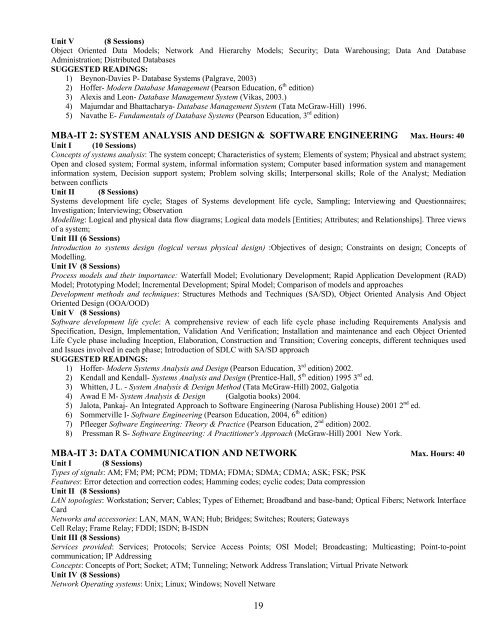
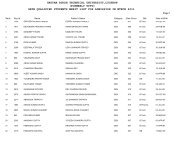
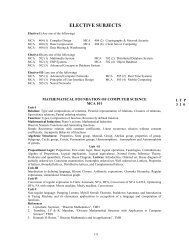

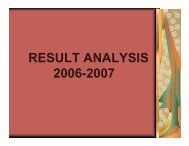

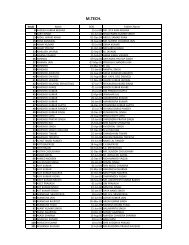

![[MODEL QUESTION PAPER] B-Tech FIRST SEMESTER ...](https://img.yumpu.com/47613205/1/190x245/model-question-paper-b-tech-first-semester-.jpg?quality=85)


